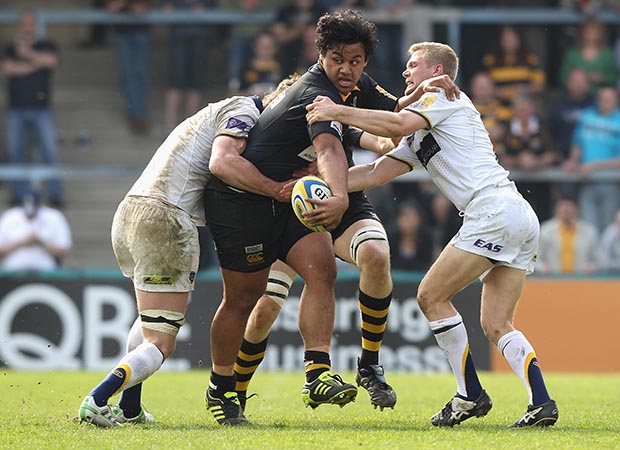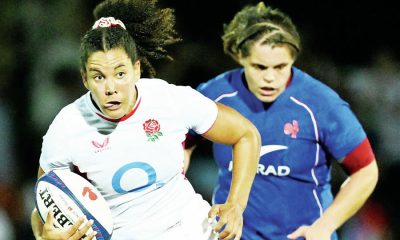

Well, if I am honest Professor Allyson Pollock and colleagues at Queen Mary University of London don’t want to ban the game completely, they just want to change the way the game is played and increase the number of safeguards within the sport.
All of which sounds like sensible advice were it not for the fact that any number of changes and safeguards have come in over the last 30 years and have had little impact on the number of injuries taking place each season.
My concerns are made worse by the fact that this influential body have chosen to release a statement that they believe government moves to try and increase rugby participation in schools are ill-conceived and risk children getting seriously injured, just as the RFU are about to push start the legacy campaign for the World Cup.
Professor Pollock’s figures show that currently a child has a one in ten chance of being injured seriously enough to require a seven-day break from the game. Most injuries occur during tackles when players collide at speed – but spinal trauma is more likely to be caused at the scrum.
Professor Pollock also points out that New Zealand seems to be more “safety conscious” as they grade their youth teams by weight rather than age.
I must admit that I am not wholly against Professor Pollock’s point of view but there are also a number of dangerous suppositions in what she proposes.
Firstly, the youth variations came into the game as a result of a number of serious injuries that had taken place in New Zealand over a very short space of time, as young players tried to emulate the All Blacks in the scrum.
At the time the All Blacks had taken to setting their scrum a distance away from their opponents and charging into them to gain momentum as the ball was fed.
At adult level, players had the experience and physique to withstand the impact but at youth level it caused a number of spinal injuries, as a result World Rugby sought to limit the charge at the engagement of the scrum at all levels but with added restrictions in youth rugby.
The professor also noted that New Zealand categorises youth players by weight not age as is the case in England. This is because in New Zealand there are a large number of ‘Polynesian children’ who mature physically at a much faster rate than those of European heritage.
With the movement of relatively large numbers of players from Polynesia to Europe and staying to raise families here, it may be time to start weight profile along with age selection but that is not without its difficulties.
Sometimes, you can have naturally bigger children who may weigh more than most of their age group but not be as strong as some of their contemporaries, placing him or her in a group with a similar weight but with different age profile who would have physically matured more, could create the potential for an increased risk of injury.
The scrum is a different issue where the stereotypical ideas of what a front-row should be built like are constantly changing because of different demands in the game.
There are a number of areas where I disagree with how scrums are taught, not least because I believe the current methods are creating inherently unstable scrums, particularly with the latest incarnation of engagement call.
By having the front-rows binding and holding just inches apart, waiting for the referee to call set and then attempt to drive into each other to obtain a ‘strong’ position, front-rows are starting with their feet parallel.
As a result, it takes only a slight down-ward pressure to cause an opponent to tip and fall, folding in on each other, whereas upward pressure forces ‘stand-ups’ with the risk of ‘whiplash’ injuries as heads are forced out.
Whilst this may be acceptable at adult level, at youth level where scrums are formed artificially high, the dangers from a tipping scrum are magnified, as youth players don’t land on their face as generally happens in the senior game, they land on the top of their head, which dramatically increases the risks of a serious spinal compression.
Much of the work the RFU are doing in the hope of gaining a lasting legacy from the World Cup is focused on minis and juniors, with an increasing number of new coaches being trained with safety at the heart of that training. As the RFU says: “Significant work has been undertaken over a number of years to develop new rules of play to ensure maximum possible safety, with a structured progression to cover the introduction, playing, teaching and refereeing of the game from U7 to U18.”
The promise this proposes is of a safe game at all levels which unfortunately I believe is untrue. Whilst it may ensure that players at a young age are exposed to a far less dangerous game (particularly in the non-contact and tag stages) it doesn’t prepare them for that eventual step into the full contact adult game.
As rugby becomes more popular and more children are encouraged to play, it is not what the coaches tell them that will influence the way they play; it is what they see their heroes do on TV and that will be the big hits at the tackle and the scrum.

2 Comments
You must be logged in to post a comment Login
Leave a Reply
Cancel reply
Leave a Reply
You must be logged in to post a comment.































Pingback: Water Heater Installation Plumbers
Pingback: ที่พักเชียงคาน